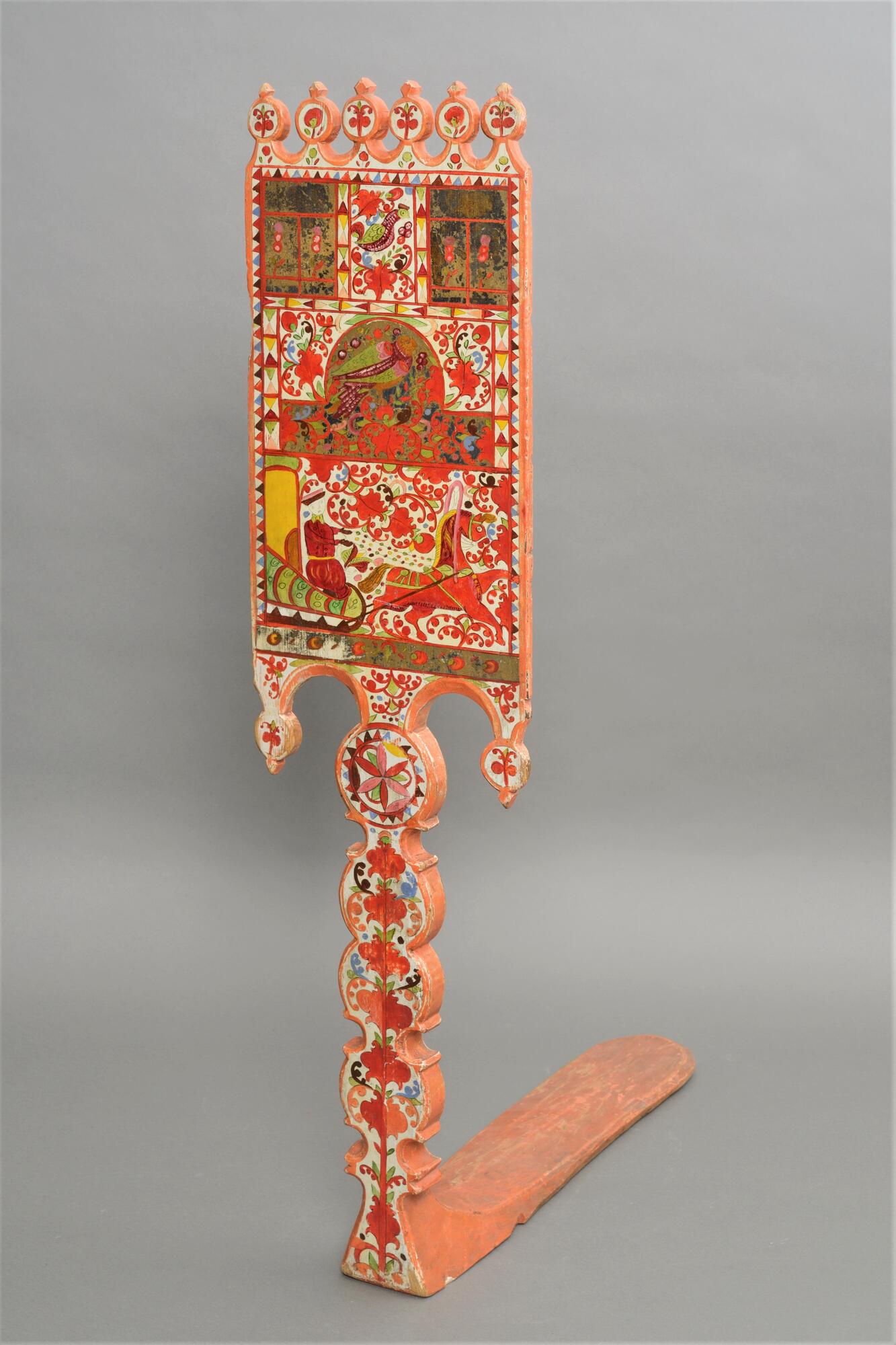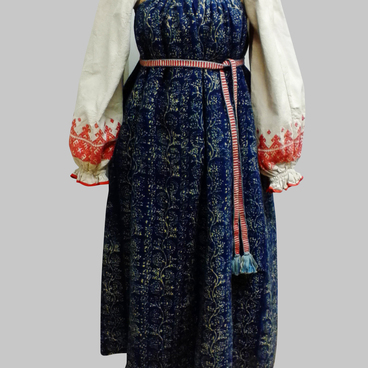According to researchers, first distaffs appeared in India more than 2,500 thousand years ago. Different peoples have formed their own forms of distaffs and versions for their decorations.
The traditional Russian distaff was a vertical arm, ridge or fork, which was attached at right angles to the horizontal bottom. A spinner sat on the bottom, and a tow of flax (the fiber cleared of lignified parts of the stem, prepared for spinning) was tied to the arm.
Girls began to learn how to spin from childhood — at the age of five to seven. The first distaff, as a rule, was traditionally a father’s gift. When the girl grew up and it was time to get married, the distaff was one of the wedding gifts from groom to bride. Such distaffs were especially choicely decorated. The owner carefully kept it throughout her life, sometimes distaffs were even passed down from generation to generation.
Distaffs from different Russian regions have their own distinctive features. In the exposition of the museum you can see a distaff from the Northern Dvina region decorated with bright paintings. It depicts one of the traditional wedding scenes: the groom on a red horse goes to woo the bride. This festive image is placed on the arm of the distaff, the top of which is decorated with round knobs with diamond-shaped endings. At the bottom of the distaff’s arm one can see weights-earrings resembling knobs. Fantastic flowers are depicted on a white background, among them — birds on the branches. The main color of the painting is red — the most festive color of folk art.
Gorodets' bases are of particular interest. In Gorodets, the spinning wheels were collapsible, and special attention was paid to the Donetsky painting. When the spinning wheel was not in use, the base was hung on the wall as a decoration. The carved decoration was combined in them with inserts of pieces of stained oak aged in water — inlaid with wood of a different tone created an interesting pattern. Plots of painting on distaffs are mainly genre scenes typical for Gorodets craft: these are ladies in carriages, military men, walking townspeople.
‘Small tower’ distaffs were made in the Yaroslavl region. They had a wide stand that turned into a diamond-shaped arm. The distaffs were decorated with contour and cramp-shaped carvings. Among the carved decorations one can find the image of a high tower with a spire. Hence the name of the distaff — ‘small tower’.
The traditional Russian distaff was a vertical arm, ridge or fork, which was attached at right angles to the horizontal bottom. A spinner sat on the bottom, and a tow of flax (the fiber cleared of lignified parts of the stem, prepared for spinning) was tied to the arm.
Girls began to learn how to spin from childhood — at the age of five to seven. The first distaff, as a rule, was traditionally a father’s gift. When the girl grew up and it was time to get married, the distaff was one of the wedding gifts from groom to bride. Such distaffs were especially choicely decorated. The owner carefully kept it throughout her life, sometimes distaffs were even passed down from generation to generation.
Distaffs from different Russian regions have their own distinctive features. In the exposition of the museum you can see a distaff from the Northern Dvina region decorated with bright paintings. It depicts one of the traditional wedding scenes: the groom on a red horse goes to woo the bride. This festive image is placed on the arm of the distaff, the top of which is decorated with round knobs with diamond-shaped endings. At the bottom of the distaff’s arm one can see weights-earrings resembling knobs. Fantastic flowers are depicted on a white background, among them — birds on the branches. The main color of the painting is red — the most festive color of folk art.
Gorodets' bases are of particular interest. In Gorodets, the spinning wheels were collapsible, and special attention was paid to the Donetsky painting. When the spinning wheel was not in use, the base was hung on the wall as a decoration. The carved decoration was combined in them with inserts of pieces of stained oak aged in water — inlaid with wood of a different tone created an interesting pattern. Plots of painting on distaffs are mainly genre scenes typical for Gorodets craft: these are ladies in carriages, military men, walking townspeople.
‘Small tower’ distaffs were made in the Yaroslavl region. They had a wide stand that turned into a diamond-shaped arm. The distaffs were decorated with contour and cramp-shaped carvings. Among the carved decorations one can find the image of a high tower with a spire. Hence the name of the distaff — ‘small tower’.



